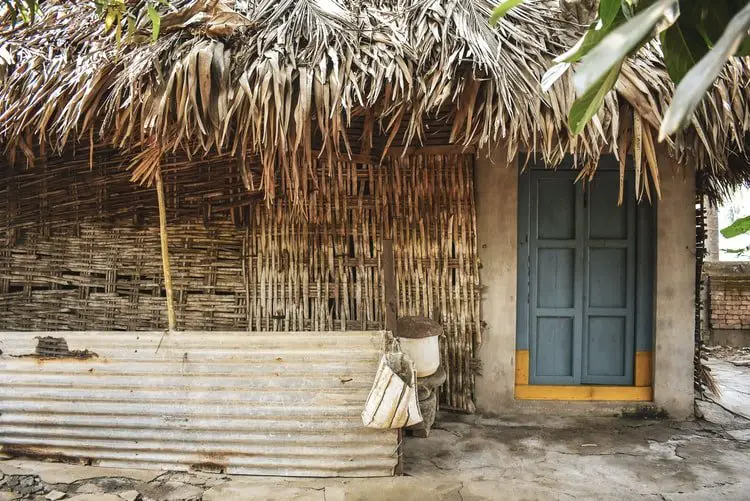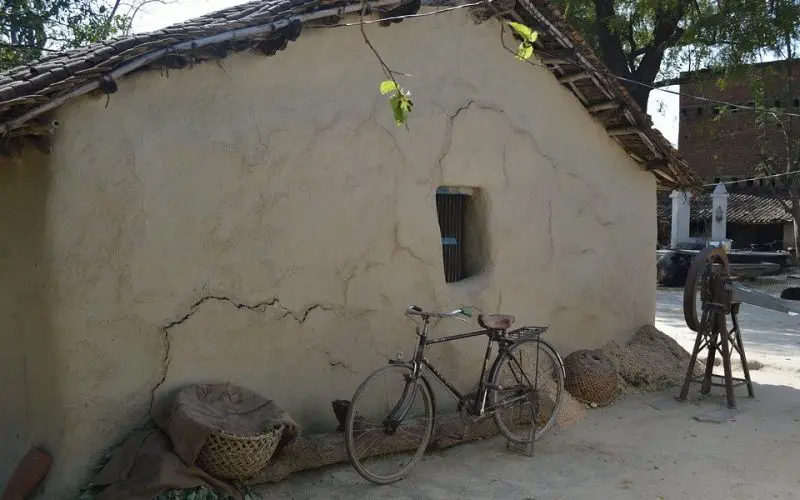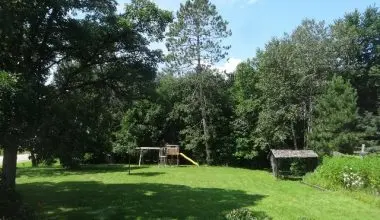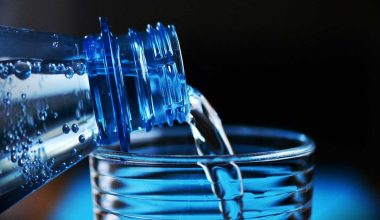Table of Contents Show
When you hear someone say that they are living in earthships, or designing earthships, your mind starts having sci-fi thoughts. It feels as if it’s a term out of a sci-fi novel or movie but in fact it isn’t, it’s actually quite real and amazing.
What are Earthships?
Earthships are basically a home design which helps to ensure sustainable living by addressing human needs effectively along with being as minimalist as one can be.
The prime benefit of Earthships in the long run is a reduction of the negative environmental impact caused by humans due to our usual living standards. Earthships are built on the ideology of complete sustainability that attempts to combine every eco-friendly option under one roof.
The cost of Earthships varies if you are building it yourself or hiring someone to build it for you. However, they can cost around 100-250 dollars per square foot depending on the craftsmenship and utilities you put into it.
Today we will look at some of the design principles, how you can make an earthship by yourself, Importance of an Earthship along with its advantages and disadvantages.
Design principles of earthships
Earthships are structures built to function as “off-the-grid homes” that have minimal reliance on fossil fuels and public utilities. They are designed and built in a way as to use naturally renewable resources such as sun and rain water and reduce our dependence on Non-renewable sources as much as possible.
Earthships are based on six basic principles, all having the commonality of taking advantage of existing natural processes.
1. Utilizing natural and repurposed materials
Earthships are designed in such a way as to make maximum use of naturally occurring and repurposed materials. These include tires, bottles, cans, woods, metals and even mud. The mud can be used to form the flooring of the earthship; you may use the tires and plastered mud to form the walls of the interior.
2. Food production
This principle is fairly new to an already developing concept of earthships. It concerns with in-home organic food production. People living in earthships hire experienced botanists to select plants which can be used for interior grey water botanical cells.
Hydroponic planters are also planted which have excellent yields of herbs, peppers, tomatoes, cucumbers, beets, kale, and more. This makes people living in the earthships self-sufficient when it comes to growing food without needing to go out and buy food from local markets.
3. Heating and cooling using thermal and solar energy
Earthships have the functionality of being able to heat and cool themselves without requiring any fossil fuels, burning of wood or consumption of electricity from the grid. Earthships harnesses the solar and thermal energy to conveniently maintain temperatures within the earthships without requirement of additional fuel.
4. Solar and wind electricity
Earthships can act as their own self-made power plant equipped with photovoltaic panels, charge controller, batteries, and inverter.
These systems may seem expensive at first glance. However, that is not the case for earthships as they are built in a way to reduce electrical requirements as much as possible. This Is why you will not require a heavy-duty solar system to begin with.
Efficient lighting, pumps and refrigeration along with minimal need of electric air conditioning all help in lowering the electricity requirements. This makes earthships more sustainable as they require 25% less energy than that of a conventional home.
5. Harvesting of water
Earthships collect and store their own water without relying on external sources. The water is collected from rain or melting of snow while storage is carried out in cisterns. Water from cisterns then feed a pump and a filtration system which cleans water. Purified water makes its way to solar water heater and to a pressure tank as well. From there onwards, the water can be used for washing, laundry, and bathing.
6. Self-sufficient sewage treatment
Once the water is used, it becomes grey water and needs to undergo purifying treatment once again. The grey water flows into botanicals cells where the plants use and purify the water as well. Once the water is clean enough, it is collected in a well. The well then pumps water on demand, to the toilet for flushing.
The toilet water goes into a septic tank, which overflows into a botanical cell outside that is filled up with exterior landscaping plants. The water in an earthship can be used up to four times without pulling water from other municipal sources.
Importance of Earthships
Eco-friendly Solution
Earthships are an environment-friendly solution for housing to combat climate change and global warming. Its design and function makes it very sustainable and eco-friendly to use, allowing us to reduce our environmental impact. In a world with unbelievable pollution, deforestation, altered weather patterns; finding eco-friendly living solutions like earthships is the way to go.
Reduced Impact on Climate Change
The materials used for earthships help to take advantage of natural resources without causing a burden on Earth. This way the natural temperatures of the region are maintained with minimal change. You can choose to adjust and build your earthship according to the climate in your region to reduce impact on natural resources. Designing earthships in such a way helps to minimize climate change and global warming.
Off-the grid!
Earthships allow you to live a sustainable lifestyle off the grid. No need to use local electricity from your regional or municipal authorities as the earthships utilize solar and wind power in order to generate electricity.
Water Conservation
Water is an important necessity required for living in every home and building. Earthship is no different. Earthships don’t use water from nearby water bodies (lakes or rivers) or from underground as well. In fact, it collects water from rain or snow and stores it into a water tank for future use.
Earthship systems allow residents of the earthships to use that water up to four times for purposes such as cleaning, showering, bathing, laundry, washing dishes as well as watering plants. This is achieved by the filtration system allowing us to minimize water from external sources and reusing it multiple times through water treatment.
Self-grown Organic Food
The indoor and outdoor gardens of the earthships provide natural organic food to the people living in them. Any type of fruit or vegetable can be grown in an earthship! This will provide nutritional benefits to you without having to buy food from local stores sourced from farms that use high concentration of fertilizers and other synthetic chemicals harmful to human health.
No Heating or Cooling Required
There is no need to set up an electric insulation or a heating system installed in an earthship as it has the ability to cool and heat itself without using an electrical appliance. This helps in reducing the use of resources which are used to heat up the house, providing more sustainable living without consuming valuable energy resources of the country.
Grey water
The grey water being produced in the earthships can be reused to feed your garden. This prevents us from outright disposal of grey water. If not properly disposed or sent to water treatment facility; grey water can cause pollution of the land and even surrounding water bodies nearby.

Advantages of Earthships
- Highly Efficient: Earthships are highly efficient buildings which utilize solar and wind power to generate their own electricity without using any from external sources.
- Water Conservation: The place uses in-built water collection, filtration and storage systems that allow water to be used on more than once occasions.
- Water filtration system is set up in the earthships which help in water to be reused once it becomes clean.
- Greywater can be repurposed to provide water to the plants planted inside as well as around the earthships.
- No need of HVAC systems: The building has the ability to self-heat and cool itself using geothermal heath, preventing the use of furnaces, insulation, or household heating systems to be used.
- The residents of the earthships can self-grow fruits and vegetables without purchasing them from local sites and farms. This way you can carry out organic farming on-site.
- The earthships are very easy to construct, if you are willing to do manual labor that is.
- Earthships use natural recycled materials in its construction and that prevents these materials from ending up in already-massive landfills.
- Energy Conservation: The earthship doesn’t require lighting up with electrical appliances as it uses natural light in abundance thereby reducing the energy load on the local electric power grids or on renewable energy sources for that matter.
- Extraordinary use of organic farms and interesting masses are the essential hallmarks of designing earthships which work together in making a sustainable and eco-friendly home.
- People living in earthships are doing a world a favor by becoming sustainable, using minimal resources, and reducing pollution which greatly reduces the heavy strain on energy resources and works towards fighting climate change.
- People tend to develop a soft heart for nature and learn living in the moment as they learn the importance of the environment and nature around them as well as dire consequences if they are not careful in their lifestyle choices.
- Earthships create awareness among other people seeing the success of the earthships, thereby motivating others to choose to live in an earthship thereby creating a ripple effect across the community.
Disadvantages of Earthships
- Sometimes the earthships tend not to work as they are intended to. They may not be as efficient as thought by the people deciding to build it and live in it.
- Selling an earthship is very difficult in some places due to the region and ideology of the people/society.
- You can’t raise all the essential food you want to in an earthship. You may still end up buying different types of food from the market as some are impossible to grow, and some might just be difficult for the residents to grow it as most of them don’t have much farming experience.
- The earthship design does employ organic and natural resources but that’s not always true. Volumes of concrete may be used in building the earthships which ultimately defeats its purpose as that contributes a large sum of greenhouse gas emissions.
- Earthships are believed to be very cheap and inexpensive, but sadly that’s not the case. They require hiring architects and manual labor to build, just as you may build a new home. The price can be controlled till some extent by the residents. They may choose to build it themselves which is easy but requires a lot of manual labor and that can be tiresome. Furthermore, if the residents are not careful while building it then it may cause injuries.
- The earthships are not easy to sell and you can’t get formal loans or mortgage for it.
- The maintenance of the earthships is also very costly.
- Proper disposal of the grey water must be done if you are to prevent contamination or pollution of your surrounding which can be difficult at times.
- Earthships use tires that are slowly and naturally breaking down and expelling gases in an enclosed environment. These gases may be absorbed by the walls and release toxic vapors which may be harmful to the inhabitants.
- Earthships may accumulate water in the wall surfaces which lead to formation of molds and algae.
- It becomes difficult to collect adequate rainwater in arid climates, which is the primary source of water for the residents. They may eventually have to obtain water from external sources.
- Earthships have a median temperature inside them. Unfortunately, it may take 2-3 years to achieve it.
- The slanted windows create problems, such as cracks and fractures in the glass due to snow accumulation, leakage into the walls, and cutting off light from the solar setup.
- There have also been reports of earthships becoming too humid resulting in condensation of bio cells during winter seasons.
- The butterfly roofs are susceptible to leakages.
- The pumps used to run the rainwater and grey water are very loud causing lots of noise pollution.
- Sometimes you may have unwanted guests in the form of crickets, centipedes, bugs, and scorpions which isn’t a good sight. Fortunately, there are organic ways of pest control.
- People may become frustrated with the constant issues and high level maintenance and may eventually abandon the project.
How to design your own earthship?
The follow is a DIY which is help you get started on how to build an earthship. You may require assistance from construction workers as well so don’t hesitate in asking them for some guidance. It’s not necessary to follow this same order when making your earthship.
I accept this is a very rough guide of how it goes building an Earthship of your own. However, you can use this book to build the perfect one for your needs.
- Firstly, choose the site where you will build your earthship.
- Scrape off the organic matter from the location.
- After scraping, level the field according to the size of your earthship.
- Order rain water collection system and a barrel to hold rain water as well as septic tanks
- Order the locally manufactured trusses for your earthships
- Once layering is completed, lay out the first set of tires.
- Level the pounded tires.
- Then you must install the vapor barrier and thermal wrap on first course.
- Keep on back-burying the tire wall and thermal wrap as the wall keeps going up
- Form and pour the concrete block to adjust coursing.
- Install the cisterns that you have already ordered.
- After the cisterns are put in place, they must be linked together.
- Make an outlet of cisterns through your tire wall to where the water organizing system of the earthship will be located.
- Install cooling tubes in each room, the tubes must be partially buried and pass through thermal wrap.
- Start digging for front face.
- Prepare the front face using vapor barrier.
- Form the buttresses with recycled bottles, cans, and concrete.
- Pour the footing.
- Set up porcupine wood plates in wet footer which will receive door buck framing
- Make stem pours for window box framing
- Place anchor bolts in wet concrete of stem pour
- Make the window boxes using Oak along with window stops that have been ripped out in advance
- Install inner window boxes and door frames
- Place oak beam above window and door boxes
- Make bond beams with cans and with minimal use of cement
- Bond beams are also poured with anchor bolts
- Once set, attach the wood plating with anchor bolts to bond beam
- Then begins the placement of first truss
- Place plywood decking on trusses
- Start mud packing
- For further construction, temporarily install the power organizing system and batteries
- Install grey water equalization pipe from reception plantar to cell
- Line the grey water cell with plastic, after which you then line it with rubber
- Framing second greenhouse
- Place a vapor barrier over the thermal wrap cap
- For the living room bean, install a corbel
- Straw and sand in planter direct is placed
- The next layer is of dirt
- Lay out the interior partition walls using bottles
- After plywood decking is completed, waterproof building paper is placed on top of it
- Insulation is placed on outside of the plywood, the insulation used is generally of recycled clothing material
- Make footing for exterior rock face wall
- Then place the first layer of rocks in cement footing with rebar
- Start building up the interior partition walls of the earthships, it is usually done with the cans
- Install operating windows and glass
- Place the power modulation and water system in the final location
- Install the insulation and vapor barrier
- Metal roofing panels are installed on the roof
- Install solar electrical panels and hot water panel
- The black water treatment panel is also lined with plastic and the planter is overfilled with gravel
- The septic tank is then installed
- Sifting of the mud is done, after which it can be applied to the inside of the walls
And your earthship is completed!






